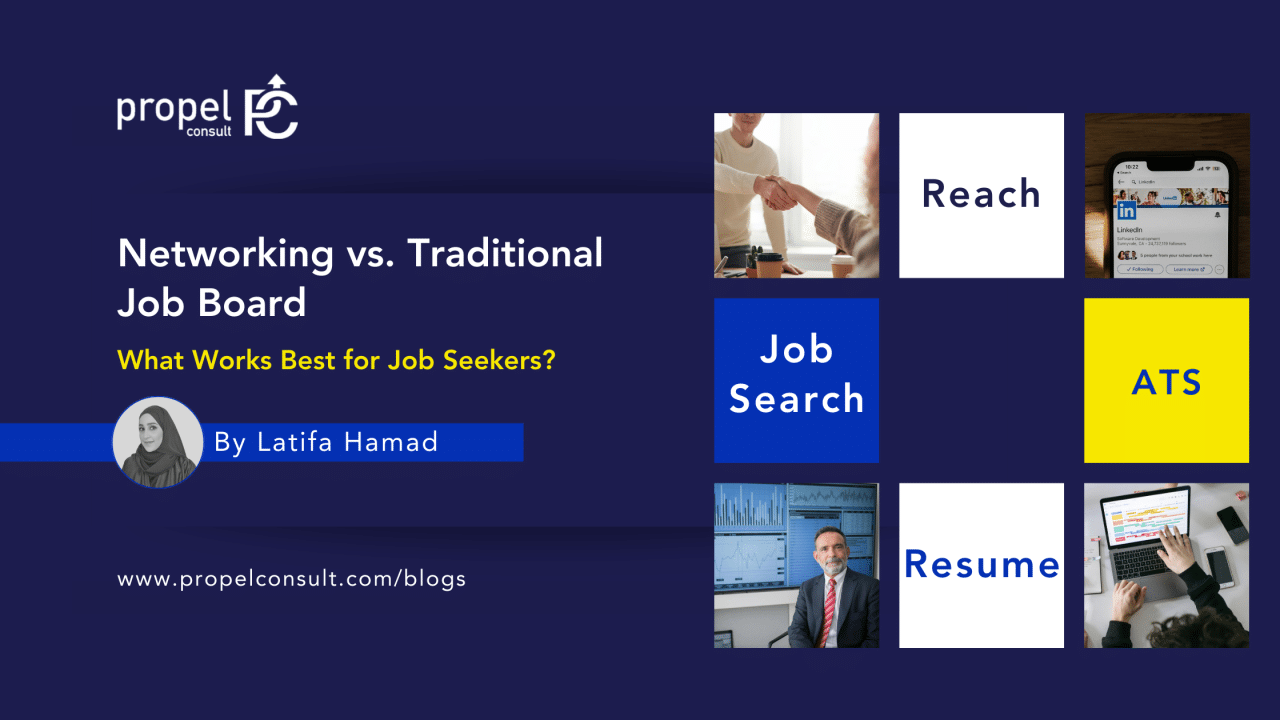For decades, job seekers have been told the same thing: polish your resume, head to the job boards, and start applying. But today’s job market tells a different story — one where who you know can matter just as much, if not more, than what you click.
In an age where roles are often filled before they’re even posted, professionals are rethinking their approach. The question now is: what’s more effective — networking or applying through job boards?
The short answer? It depends. But there’s growing evidence that networking leads to stronger, faster, and more sustainable job opportunities.
The Power of Networking
Networking isn’t just for extroverts or seasoned professionals — it’s a strategy for anyone serious about building a meaningful career. Whether it’s through coffee chats, LinkedIn connections, or industry events, networking opens doors that job boards simply can’t.
Here’s why it works:
Access to the hidden job market: A large number of open roles are never advertised publicly. They’re filled with internal recommendations or word of mouth.
Faster hiring: When someone refers to you, hiring managers often move quicker because there’s already a layer of trust.
Better fit: Conversations with insiders can give you a clearer sense of company culture and role expectations before you even apply.
Networking isn’t about asking for a job. It’s about starting a conversation, building relationships, and staying at the top of mind when opportunities arise.
Why Job Boards Still Matter
Despite its limitations, traditional online job hunting is far from obsolete. Platforms like LinkedIn, indeed, and Glassdoor remain key tools — especially for entry-level professionals or those changing industries.
Benefits of job boards include:
Volume and reach: With a few clicks, candidates can apply roles across companies and geographies.
Structure: Larger companies often rely on applicant tracking systems (ATS) that begin with public postings.
Transparency: Salary ranges, qualifications, and role expectations are often clearly outlined in listings.
However, with hundreds — sometimes thousands — of applicants for a single role, standing out requires more than just a strong resume. Many applications never make it past the algorithm.
What the Data Suggests
To get a snapshot of what’s working for job seekers today, we ran a quick LinkedIn poll. The majority — 57% — said they landed their last job through networking or referrals. Only 26% found success through job boards.
While the sample size was modest, the takeaway is consistent with what many studies and career experts are seeing: networking is often the fastest, most reliable path to employment.

What’s the Best Approach? Use Both — Strategically
Rather than choosing one method, successful job seekers combine both. Here’s how:
- Start with networking: Let your network know you’re exploring new opportunities. Ask for introductions, not favors.
- Stay active on job boards: Use them to stay informed, then pair each application with a connection request or informational chat.
- Be visible: Share your insights on LinkedIn, attend webinars, and comment on relevant posts — it all helps build your presence.
In today’s competitive job market, sending out dozens of applications isn’t enough. Relationships, trust, and conversations often lead to real opportunities — and faster results.
Networking isn’t just a nice-to-have anymore. It’s a job search essential.
At Propel Consult, we help professionals strengthen their networks, refine their approach, and navigate the modern job market with confidence. If you’re planning your next career move, we’re here to help you do it strategically.


